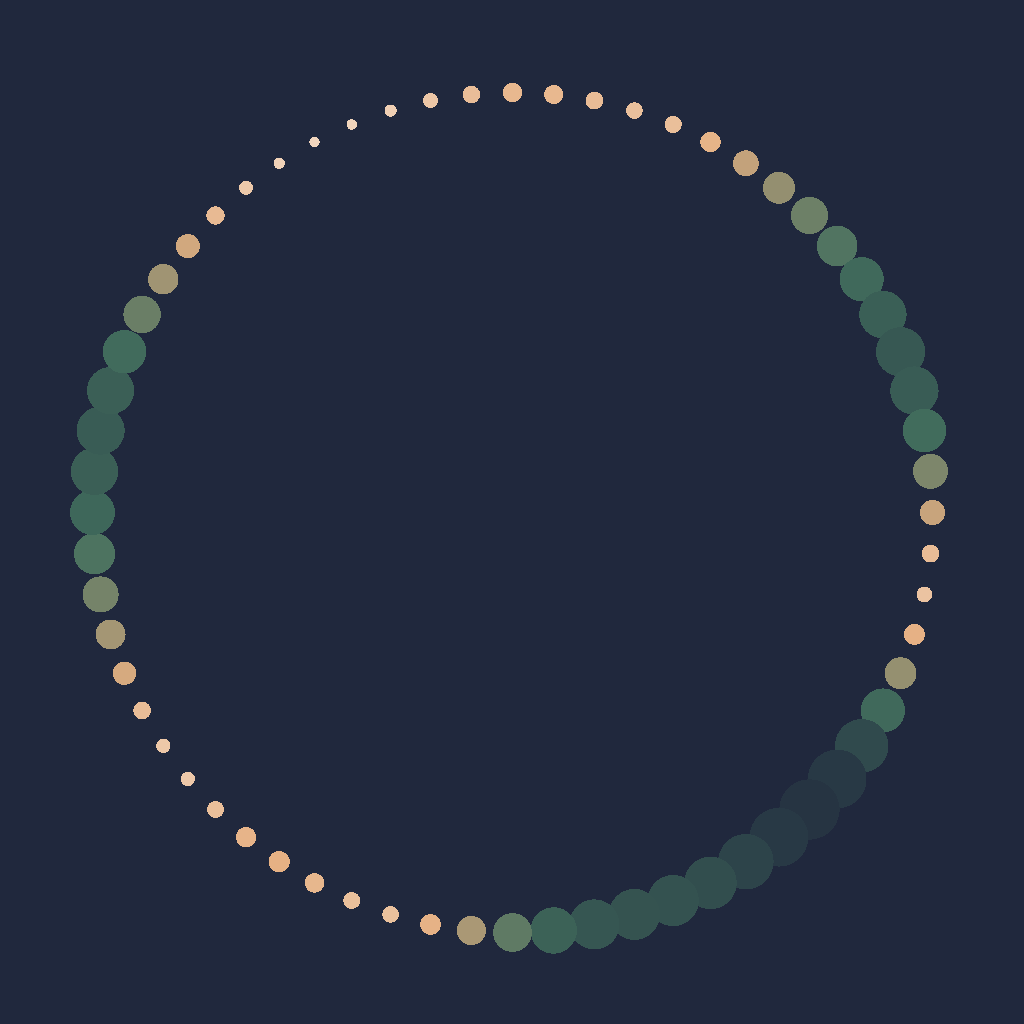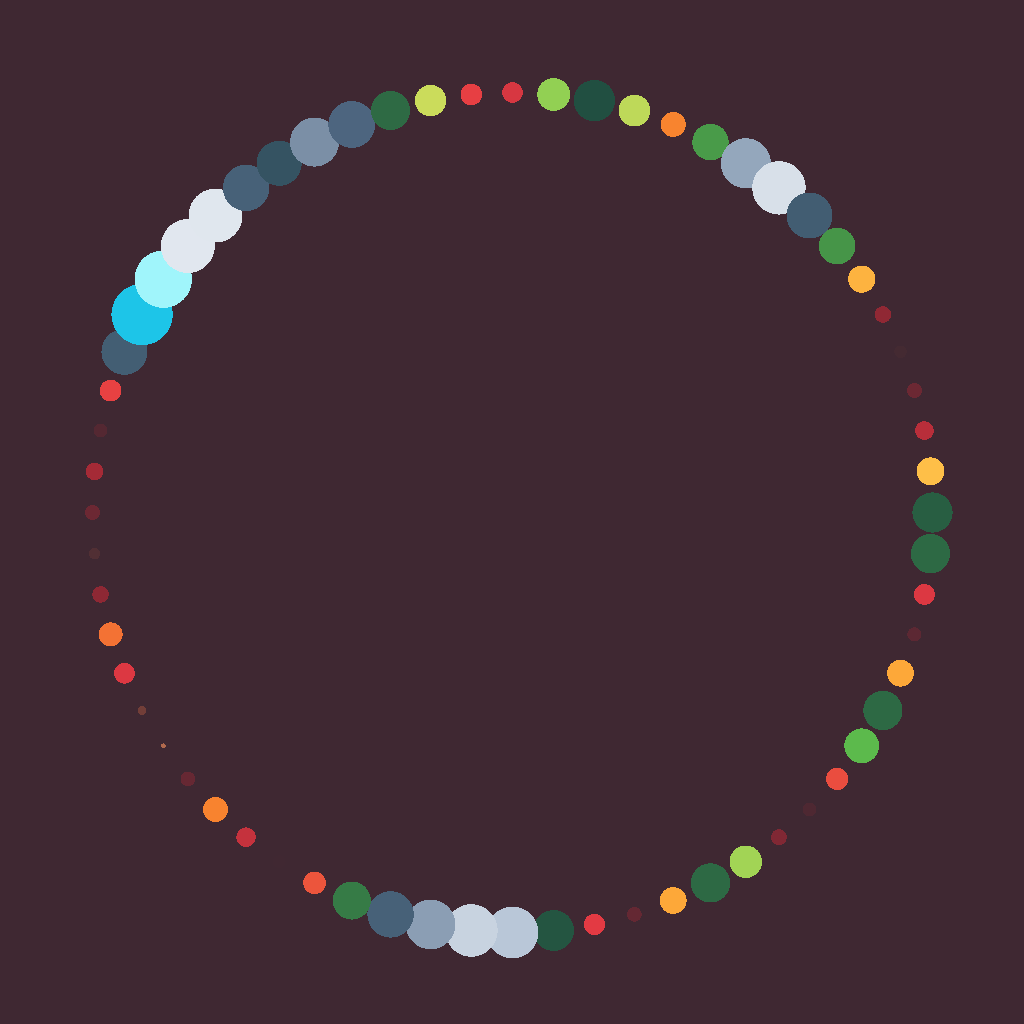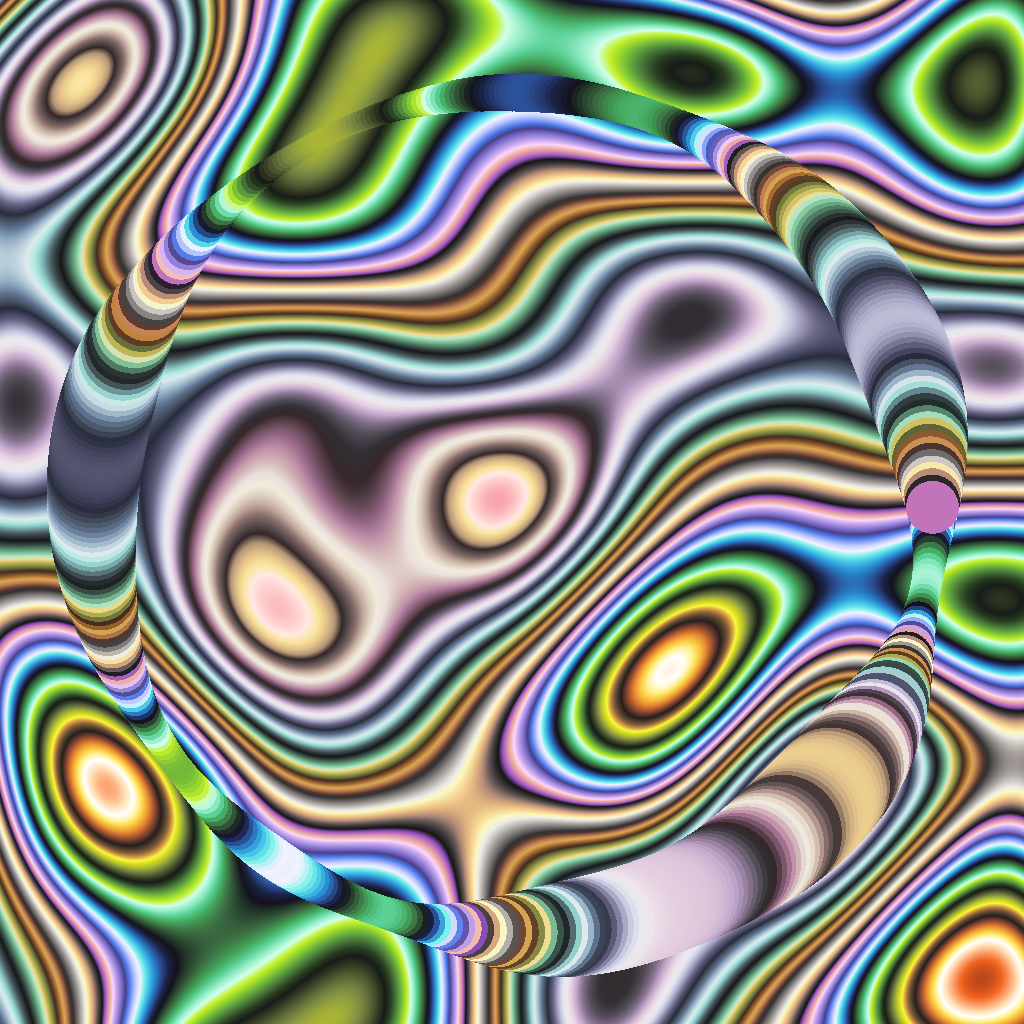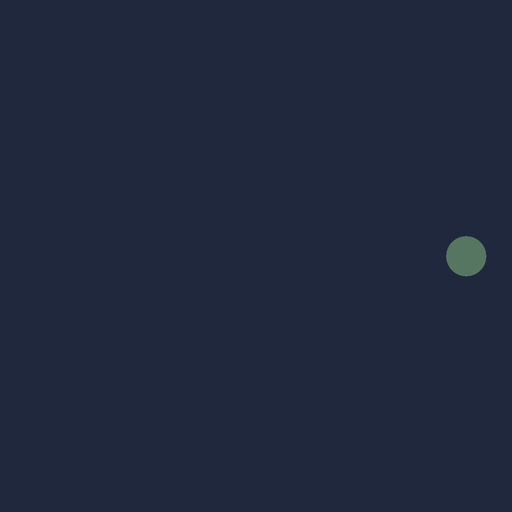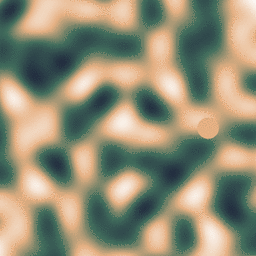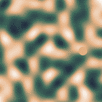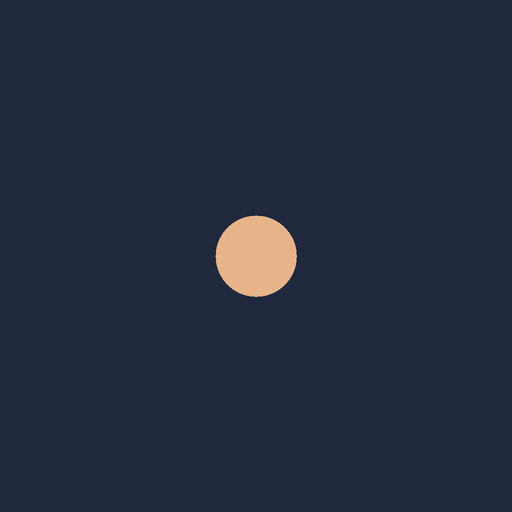Last active
March 14, 2019 09:55
-
-
Save peterhellberg/db70d52856ea78bb995b855c8a4e1d9b to your computer and use it in GitHub Desktop.
(Simplex) Noise loops using gfx
This file contains bidirectional Unicode text that may be interpreted or compiled differently than what appears below. To review, open the file in an editor that reveals hidden Unicode characters.
Learn more about bidirectional Unicode characters
| package main | |
| import "github.com/peterhellberg/gfx" | |
| const ( | |
| seed = 123 | |
| scale = 256 | |
| radius = 420 | |
| count = 64 | |
| ) | |
| func main() { | |
| var ( | |
| p = gfx.PaletteEN4 | |
| m = gfx.IM.Moved(gfx.V(512, 512)) | |
| sn = gfx.NewSimplexNoise(seed) | |
| dst = gfx.NewImage(1024, 1024, p.Color(3)) | |
| ) | |
| s := newState(scale, radius, count, sn, m) | |
| gfx.EachImageVec(dst, gfx.V(1, 1), func(u gfx.Vec) { | |
| gfx.SetVec(dst, u, p.At(s.noise(u))) | |
| }) | |
| for _, u := range s.points { | |
| n := s.noise(u) | |
| gfx.DrawCircle(dst, u, n*32, 0, p.At(n)) | |
| } | |
| gfx.SavePNG("gfx-noise-loops.png", dst) | |
| } | |
| func newState(scale, radius float64, count int, sn *gfx.SimplexNoise, matrix gfx.Matrix) *state { | |
| s := &state{ | |
| SimplexNoise: sn, | |
| scale: scale, | |
| matrix: matrix, | |
| theta: (gfx.Pi * 2) / float64(count), | |
| } | |
| for n := 0; n < count; n++ { | |
| angle := s.theta * float64(n) | |
| s.points = append(s.points, matrix.Project(gfx.V( | |
| radius*gfx.MathCos(angle), | |
| radius*gfx.MathSin(angle), | |
| ))) | |
| } | |
| return s | |
| } | |
| type state struct { | |
| *gfx.SimplexNoise | |
| scale float64 | |
| theta float64 | |
| matrix gfx.Matrix | |
| points gfx.Polygon | |
| } | |
| func (s *state) noise(u gfx.Vec) float64 { | |
| return (s.Noise2D(u.X/s.scale, u.Y/s.scale) + 1) / 2 | |
| } |
Author
peterhellberg
commented
Mar 14, 2019
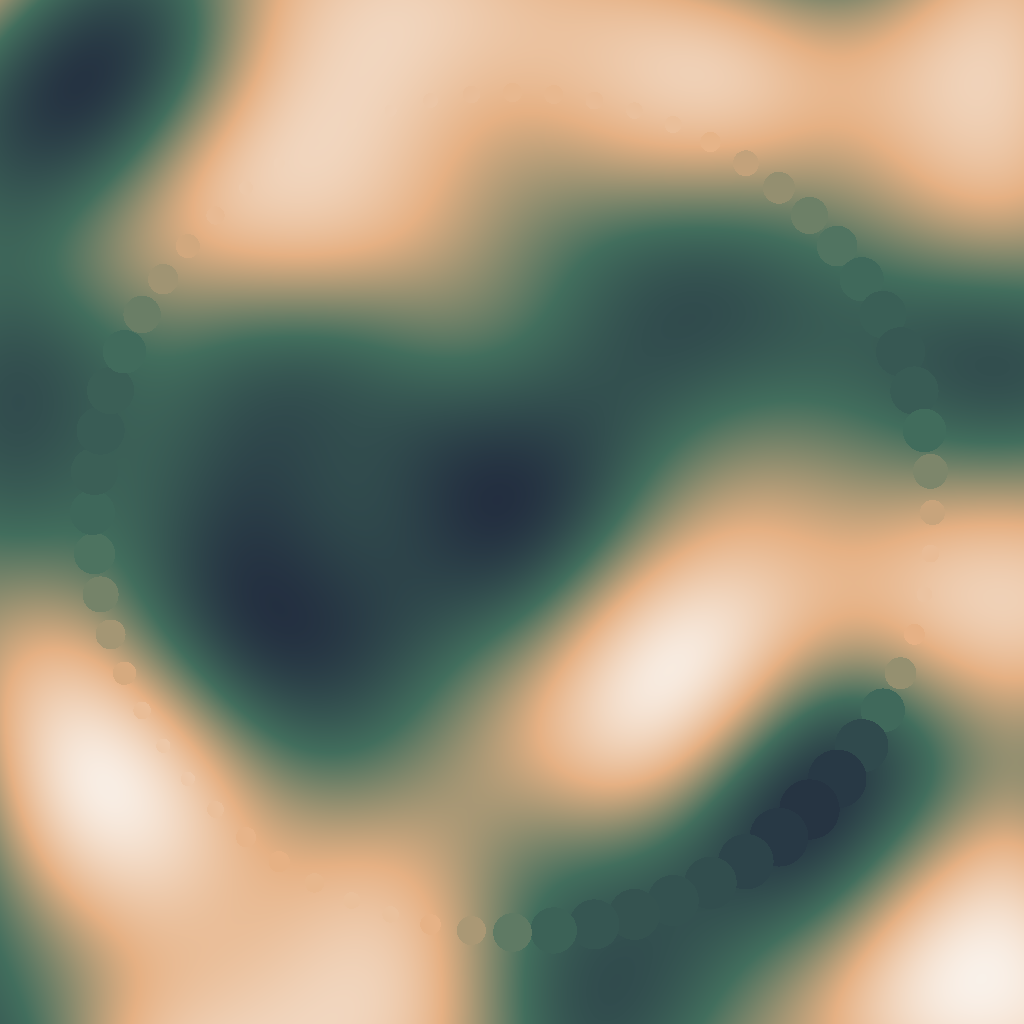
Animation
package main
import "github.com/peterhellberg/gfx"
const (
seed = 123
scale = 256
radius = 420
count = 512
)
func main() {
var (
p = gfx.PaletteEN4
m = gfx.IM.Moved(gfx.V(512, 512))
sn = gfx.NewSimplexNoise(seed)
)
s := newState(scale, radius, count, sn, m)
for i, u := range s.points {
dst := gfx.NewImage(1024, 1024, p.Color(3))
n := s.noise(u)
gfx.DrawCircle(dst, u, n*64, 0, p.At(n))
gfx.SavePNG(gfx.Sprintf("gfx-noise-loops-animation-%03d.png", i), dst)
}
}
func newState(scale, radius float64, count int, sn *gfx.SimplexNoise, matrix gfx.Matrix) *state {
s := &state{
SimplexNoise: sn,
scale: scale,
matrix: matrix,
theta: (gfx.Pi * 2) / float64(count),
}
for n := 0; n < count; n++ {
angle := s.theta * float64(n)
s.points = append(s.points, matrix.Project(gfx.V(
radius*gfx.MathCos(angle),
radius*gfx.MathSin(angle),
)))
}
return s
}
type state struct {
*gfx.SimplexNoise
scale float64
theta float64
matrix gfx.Matrix
points gfx.Polygon
}
func (s *state) noise(u gfx.Vec) float64 {
return (s.Noise2D(u.X/s.scale, u.Y/s.scale) + 1) / 2
}Animation with noise field background
package main
import "github.com/peterhellberg/gfx"
const (
seed = 123
scale = 256
radius = 320
count = 256
)
func main() {
var (
p = gfx.PaletteEN4
m = gfx.IM.Moved(gfx.V(512, 512))
sn = gfx.NewSimplexNoise(seed)
)
s := newState(scale, radius, count, sn, m)
for i, u := range s.points {
dst := gfx.NewImage(1024, 1024)
gfx.EachImageVec(dst, gfx.V(1, 1), func(u gfx.Vec) {
gfx.SetVec(dst, u, p.At(s.noise(u)))
})
n := s.noise(u)
gfx.DrawCircle(dst, u, n*128, 0, p.At(n))
gfx.SavePNG(gfx.Sprintf("gfx-noise-loops-animation-%03d.png", i), dst)
}
}
func newState(scale, radius float64, count int, sn *gfx.SimplexNoise, matrix gfx.Matrix) *state {
s := &state{
SimplexNoise: sn,
scale: scale,
matrix: matrix,
theta: (gfx.Pi * 2) / float64(count),
}
for n := 0; n < count; n++ {
angle := s.theta * float64(n)
s.points = append(s.points, matrix.Project(gfx.V(
radius*gfx.MathCos(angle),
radius*gfx.MathSin(angle),
)))
}
return s
}
type state struct {
*gfx.SimplexNoise
scale float64
theta float64
matrix gfx.Matrix
points gfx.Polygon
}
func (s *state) noise(u gfx.Vec) float64 {
return (s.Noise2D(u.X/s.scale, u.Y/s.scale) + 1) / 2
}Without moving the position of the drawn circle
package main
import "github.com/peterhellberg/gfx"
const (
size = 1024
seed = 123
scale = 256
radius = 256
count = 256
)
func main() {
var (
p = gfx.PaletteEN4
m = gfx.IM.Moved(gfx.V(512, 512))
sn = gfx.NewSimplexNoise(seed)
)
s := newState(scale, radius, count, sn, m)
for i, u := range s.points {
dst := gfx.NewImage(size, size, p.Color(3))
n := s.noise(u)
gfx.DrawCircle(dst, gfx.V(512, 512), n*256, 0, p.At(n))
gfx.SavePNG(gfx.Sprintf("gfx-noise-loops-animation-2-%03d.png", i), dst)
}
}
func newState(scale, radius float64, count int, sn *gfx.SimplexNoise, matrix gfx.Matrix) *state {
s := &state{
SimplexNoise: sn,
scale: scale,
matrix: matrix,
theta: (gfx.Pi * 2) / float64(count),
}
for n := 0; n < count; n++ {
angle := s.theta * float64(n)
s.points = append(s.points, matrix.Project(gfx.V(
radius*gfx.MathCos(angle),
radius*gfx.MathSin(angle),
)))
}
return s
}
type state struct {
*gfx.SimplexNoise
scale float64
theta float64
matrix gfx.Matrix
points gfx.Polygon
}
func (s *state) noise(u gfx.Vec) float64 {
return (s.Noise2D(u.X/s.scale, u.Y/s.scale) + 1) / 2
}
Sign up for free
to join this conversation on GitHub.
Already have an account?
Sign in to comment
